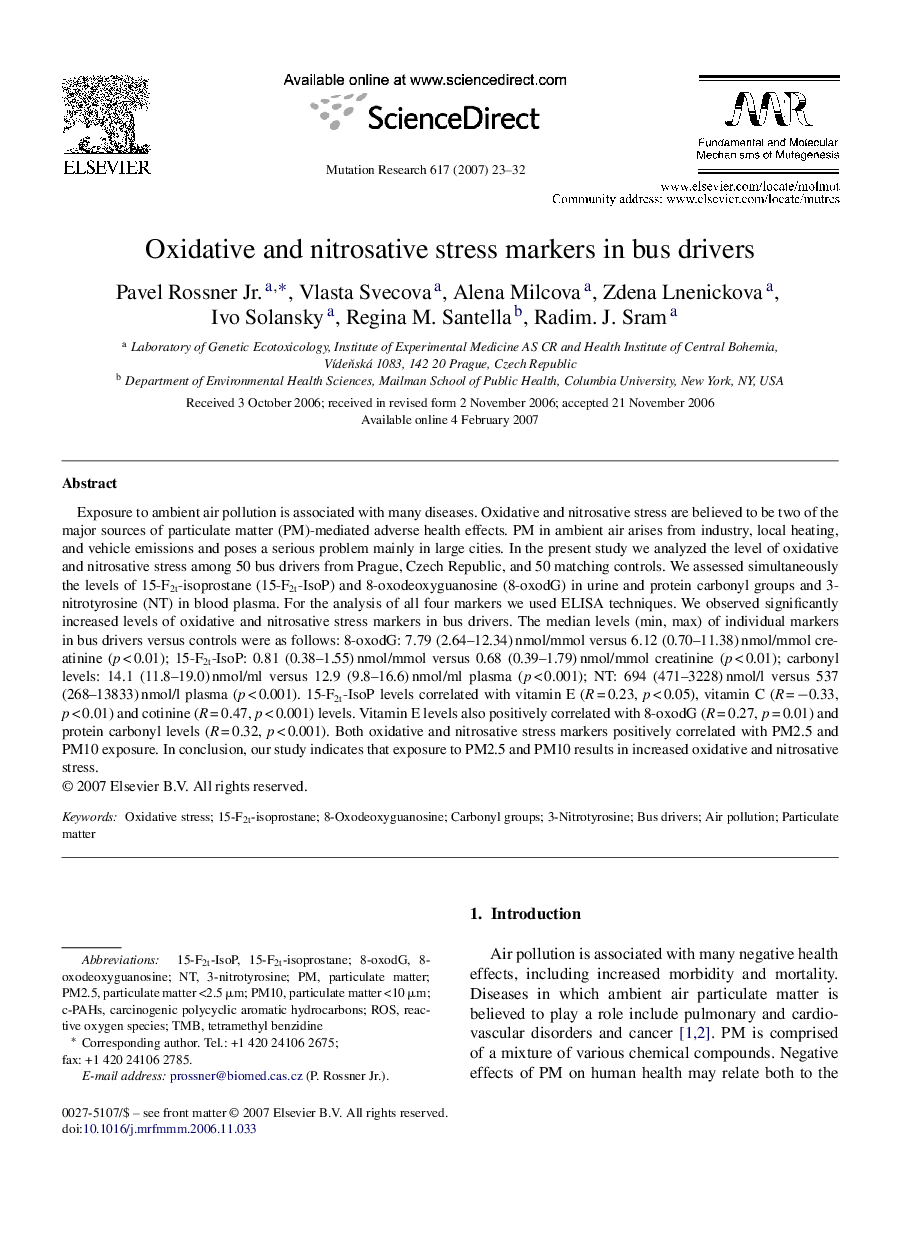| کد مقاله | کد نشریه | سال انتشار | مقاله انگلیسی | نسخه تمام متن |
|---|---|---|---|---|
| 2147491 | 1548412 | 2007 | 10 صفحه PDF | دانلود رایگان |

Exposure to ambient air pollution is associated with many diseases. Oxidative and nitrosative stress are believed to be two of the major sources of particulate matter (PM)-mediated adverse health effects. PM in ambient air arises from industry, local heating, and vehicle emissions and poses a serious problem mainly in large cities. In the present study we analyzed the level of oxidative and nitrosative stress among 50 bus drivers from Prague, Czech Republic, and 50 matching controls. We assessed simultaneously the levels of 15-F2t-isoprostane (15-F2t-IsoP) and 8-oxodeoxyguanosine (8-oxodG) in urine and protein carbonyl groups and 3-nitrotyrosine (NT) in blood plasma. For the analysis of all four markers we used ELISA techniques. We observed significantly increased levels of oxidative and nitrosative stress markers in bus drivers. The median levels (min, max) of individual markers in bus drivers versus controls were as follows: 8-oxodG: 7.79 (2.64–12.34) nmol/mmol versus 6.12 (0.70–11.38) nmol/mmol creatinine (p < 0.01); 15-F2t-IsoP: 0.81 (0.38–1.55) nmol/mmol versus 0.68 (0.39–1.79) nmol/mmol creatinine (p < 0.01); carbonyl levels: 14.1 (11.8–19.0) nmol/ml versus 12.9 (9.8–16.6) nmol/ml plasma (p < 0.001); NT: 694 (471–3228) nmol/l versus 537 (268–13833) nmol/l plasma (p < 0.001). 15-F2t-IsoP levels correlated with vitamin E (R = 0.23, p < 0.05), vitamin C (R = −0.33, p < 0.01) and cotinine (R = 0.47, p < 0.001) levels. Vitamin E levels also positively correlated with 8-oxodG (R = 0.27, p = 0.01) and protein carbonyl levels (R = 0.32, p < 0.001). Both oxidative and nitrosative stress markers positively correlated with PM2.5 and PM10 exposure. In conclusion, our study indicates that exposure to PM2.5 and PM10 results in increased oxidative and nitrosative stress.
Journal: Mutation Research/Fundamental and Molecular Mechanisms of Mutagenesis - Volume 617, Issues 1–2, 1 April 2007, Pages 23–32